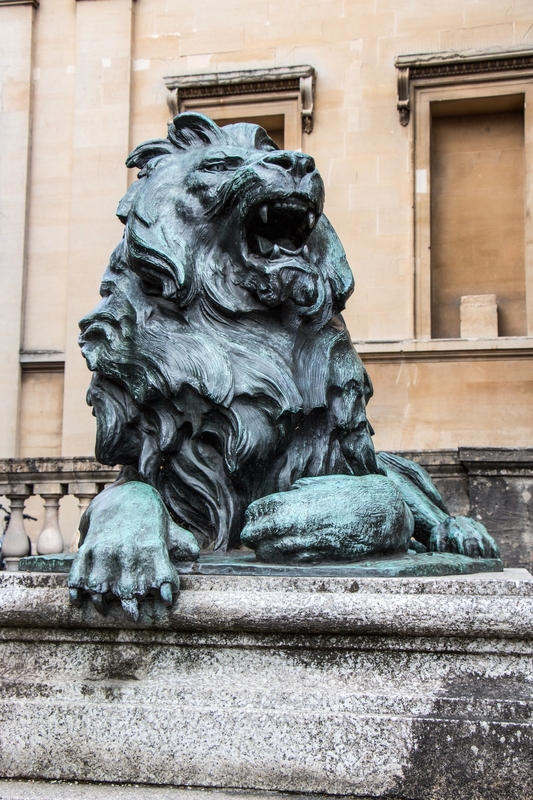
Edward VII (1841–1910) 1914 or before
Henry Poole (1873–1928) and Edwin Alfred Rickards (1872–1920) and J. W. Singer & Sons (founded 1847) and George Humphreys and Sons
Edwin Alfred Rickards [also known as E.A. Rickards] has been described as the most flamboyant of Edwardian architects. He was born in Chelsea, London, England in June 1872 and was articled to Richard John Lovell (1858?-1931) at the age of fifteen in 1887. He also studied the Royal Academy Schools in London and attended classes at the Architectural Association in London. From 1889 he was employed as an assistant to Frederick Eedle and Sydney Herbert Meyers (1866-1951) of Eedle & Meyers. He then worked as assistant to William Dunn (1859-1934) and Robert Watson (1865-1916) of Dunn & Watson; to James Howard Ince; to George Sherrin (1843-1909); and to Leonard Aloysius Scott Stokes (1858-1925). In 1896 he qualified as an architect and that year went into partnership with Henry Vaughan Lanchester (1863-1953) and with James A.
Following the death Stewart in 1904, the practice was renamed Lanchester & Rickards. Among projects by Lanchester Stewart & Rickards were the City Hall and Law Courts in Cardiff, Wales (1898-1903); and and Deptford Town Hall (1903).
Rickards designed a number of public ornaments, including the Lord Roberts Monument in Calcutta (1894-98) in collaboration with Harry Bates (1850-1899). He also collaborated with the sculptor Henry Poole (1873-1928) on public monuments including the statue of Captain Albert Ball for Nottingham Castle, unveiled on 8 September 1921.
Rickards was elected a member of the Art Workers Guild in 1904 and a Fellow of the Royal Institute of British Architects (FRIBA) in 1906. In addition to his work as an architect and sculptor, Rickards was a painter and illustrator. A watercolour sketch of St. John Evangelist Church in Red Lion Square, London, by him is illustrated in Architectural Review vol. 1 no. 1, November 1897 (p.8). Rickards illustrated Paris Nights (1913) and From the Log of the Velsa (1914) by Arnold Bennett. He also designed the cover of the Royal Institute of Town Planning Conference, 1910: Members' Handbook.
In 1916 he volunteered for service in World War One but was invalided out of the Army within three months. He died in Bournemouth, Dorset on 28 August 1920.
Text source: Arts + Architecture Profiles from Art History Research net (AHRnet) https://www.arthistoryresearch.net/



